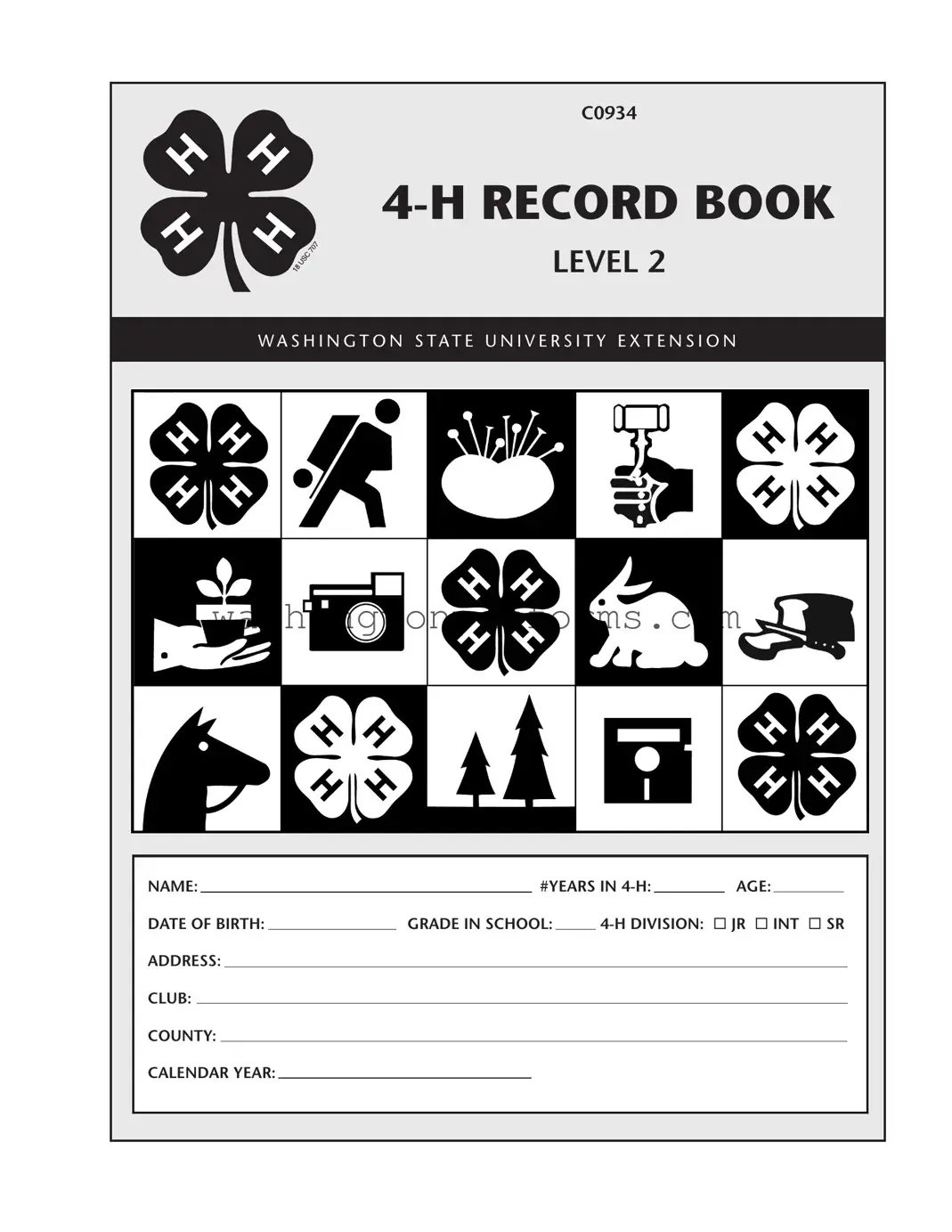Filling out the Washington 4-H Record Book form can be a rewarding experience, but there are common mistakes that participants often make. One frequent error is neglecting to keep the record book current. As the year progresses, it is essential to update entries regularly. This practice not only helps in maintaining accurate records but also aids in reflecting on achievements and challenges faced throughout the year.
Another common mistake involves failing to obtain necessary signatures on the Project Commitment section. This agreement is crucial as it outlines the learning goals and the support system in place. Without these signatures, the commitment may lack validity, which can lead to confusion later on.
Participants often overlook the importance of detailed entries in the Project Journal. A vague description of activities can undermine the value of the record book. Instead, provide specific information about what was done, including the date, the actions taken, and any challenges encountered. This level of detail is essential for a comprehensive understanding of the project’s progression.
In addition, many individuals forget to summarize their projects effectively in the Project Highlights section. This part should reflect on the original goals and assess whether they were met. By not doing this, participants miss an opportunity to evaluate their learning experiences and identify areas for improvement.
Another mistake is failing to complete the Financial Summary accurately. This summary should detail all expenses and income related to the project. Without this information, participants may not have a clear picture of their project's financial health, which is a crucial aspect of the learning process.
Using the Project Add Sheets incorrectly is also a common issue. These sheets are designed for projects with specific needs. When participants do not utilize them properly, they may miss important information that could enhance their overall project documentation.
Lastly, neglecting the My 4-H Story Narrative can diminish the overall impact of the record book. This narrative should be a personal reflection of the year, capturing growth and experiences. Skipping this section or writing it in a rushed manner can lead to a less meaningful record of the 4-H journey.
